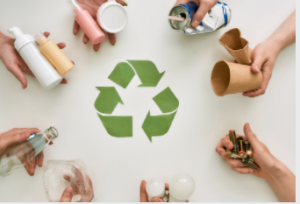Imagine purchasing a beverage made of recycled plastic bottles and disposing of them after drinking in your recycling bin; afterwards, they would be transported directly to a material recovery facility for processing.
Advocates of bottle bills have long noted the environmental benefits associated with them, such as litter reduction.
- Recycling Bottles Saves Energy
Reducing waste through beverage bottle recycling Adelaide can reduce waste production while saving significant energy resources. Manufacturing new glass, aluminium, and plastic bottles requires extensive fossil fuel usage, emitting greenhouse gasses into the environment. Recycling saves both resources and greenhouse gas emissions!
Recycling bottles allows them to be reused repeatedly, creating an endless reuse cycle. Most water and soda bottles are constructed from polyethylene terephthalate plastic (PET), one of the most recyclable forms of plastics.
- Recycling Bottles Reduces Carbon Footprint
When you place an empty beverage container into a bottle recycling bin, it gets collected and transported to a Material Recovery Facility (MRF), where it’s separated with other recyclable materials such as paper, glass and metal before being colour-sorted and sold off to companies who make new PET bottles and jugs from this recycled material.
MRFs that recycle recovered PET must be specially constructed, as the recycled material should be free from contaminants that might end up as marine debris and be mistaken by birds and fish as food sources.
Dinger reports that clean, high-quality PET from bottle deposit and curbside programs is typically cheaper than virgin plastic, lowering beverage container production costs while decreasing carbon emissions. This beverage bottle recycling Adelaide helps keep costs under control and reduce carbon emissions.
- Recycling Bottles Reduces Water Use
The water bottle recycling industry is flourishing, and beverage companies are doing all they can to ensure their bottles are recycled. Many large carbonated soft drink producers have made pledges to increase their use of recycled plastic and glass in production processes.
Reusable bottles can be reused endlessly before breaking, while recycling bins often only accept used water bottles that have been reused once. Many municipal programs recycle water jugs, bottles, and soda/beer containers.
- Recycling Bottles Reduces Waste
 Polyethylene Terephthalate, commonly called PET plastic, is widely used for bottle manufacturing. Rated number one on the recycling code and generally marked with the triangle symbol that signifies recycling, PET can be reused multiple times before needing replacement. Many other plastic types only allow limited recycling opportunities, whereas PET can be recycled multiple times.
Polyethylene Terephthalate, commonly called PET plastic, is widely used for bottle manufacturing. Rated number one on the recycling code and generally marked with the triangle symbol that signifies recycling, PET can be reused multiple times before needing replacement. Many other plastic types only allow limited recycling opportunities, whereas PET can be recycled multiple times.
However, only 30% of beverage bottles are recycled effectively; most are downcycled into carpets or benches before ending up in landfills or the ocean, where they often look like food to wildlife and can even confuse birds into thinking it’s fish! To increase recycling rates of PET plastic, public education, more bins in schools and workplaces, and laws mandating higher minimum recycled content would help; extended producer responsibility could also boost rates further.
- Recycling Bottles Reduces Hazards
Studies show that recycling plastic bottles helps them remain out of landfills and on roadsides while decreasing demand for virgin plastics.
Recycling bottles is not only beneficial to the environment; it also creates jobs in communities. Jobs created include those responsible for designing labels for recycling bins, collecting and sorting materials, and producing new products made with recycled content. Recycling helps lower fossil fuel demand while simultaneously decreasing energy consumption and emissions of greenhouse gasses – while simultaneously decreasing methane gas, an extremely potent GHG, from landfill sites.
When you drop off your bottles and cans for recycling, they’re typically separated into groups of like items. Plastics are collected together, as well as paper and glass. Once the materials are all sorted, they’re sent to a facility called a material recovery facility (MRF) for processing. In most cases, these facilities are located within the city or county in which you live, and they’re where your curbside and drop-off recycling ends up.